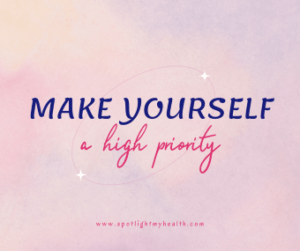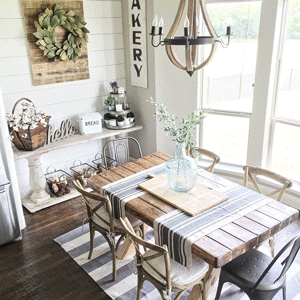How do you set-up an easy budget? Let’s start with the basics. Budgeting means different things to different people, but it’s basically a plan on how you want to use your money.
And rule #1 is: The name of the game is to keep as much of your money in your pocket or working for you that you can—so you need to know exactly where your funds are going. And the easier you can make your budget, the better.
It doesn’t matter what your take home pay is or what your financial situation is; you can only control your money if you know where it’s going and have a plan for what you want to do with it. It’s called a budget.
And –this is the biggie, so listen up!! You have to be disciplined enough to stick with it. If you don’t, you’ll look back in 10 years and wonder what the hell you did with all the money you spent your time earning. Trust me, you will hit this point and wonder why you have nothing to show for your hard-earned money. How do I know? Been there, done that.
So, make things easier on your psyche and make a budget. It will make life easier. When you are looking at that new pair of shoes, you need to know ahead of time if you can really get them or not—Maybe next payday. Better still—save some money from your next two paychecks and then go get those shoes.
COMPLICATED OR EASY BUDGET?
Luckily, you can make your budget as easy as you want or as complicated as you want. It’s your decision. Just remember to stay within the bounds of your take home salary. Yes, you read that correct. You need to use your take home pay, not your salary as you think of it.
I tend to like things simple, as simple as I can make it. So, I don’t use a spreadsheet. That seems way too complicated to me and something I don’t want to bother with. If that works for you—that’s the way to go.
I don’t like to keep track of everything I spend; but I did for a month or two to see where I was spending and to see what I could change or do away with. I’ve stuck with my budget for years, checking every 3-4 months to make sure I’m still doing what is best for my money. I like my peace of mind.
Whatever you choose to do, if it works for you, great. The point is to just start the plan, work it and stick with it.
PAYING BILLS ONCE A MONTH
My goal is to only have to do this once a month, as paying bills is not one of my favorite things to do. Another tip: I have my bills delivered by email, so when they come in, I just move them to a file I’ve made, called—–ready for it—Bills. LOL. This way, when it’s time to pay my bills, I just pull up this file and one at a time put them into my bank’s system.
Whenever I set-up a new budget, I take a photo of it with my phone and put the chart into a file on my phone. That makes it very easy to pull up my budget whenever I need to look at It, wherever I am. All I need to do is pull up my chart, sign into my bank and enter figures and payment dates. Hit send and I’m basically done with bills for the month.
Once in a while, a bill may not be in when I do the bills and I’ll put an estimate of what I know the bill will be when it does come in. This way, if I forget to go back and fill that bill in, some amount of money goes out. I’m not late and its usually just a bit more than needed.
Now, let’s get down to the nitty, gritty of planning….

BUDGET BASICS (to set-up an easy budget)
Basically, there are three categories in every budget.
1. Fixed Essentials: expenses that occur regularly, don’t change and are necessary
2. Savings: self-explanatory
3. Debt/discretionary: expenses that you have basically chosen
4. Miscellaneous: I throw this in if I can’t decide which category something goes into
I’m also going to put the percentage of your pay that should go toward a specific category according to money guru, Dave Ramsey. When you have these percentages, it gives you a better idea of what you can afford when you go to make a purchase, especially if it’s a big purchase, like a car.
FIXED ESSENTIALS
Housing (25%)
Rent/mortgage
Taxes
Homeowner’s insurance (usually included in your mortgage)
HOA fees
Insurances/Health (10-20%)
Health Insurance Premium (if it’s not taken out of your pay)
Medications
Health Flex-Card
Co-pays
Dental/Eye
Life Insurance
Car insurance
Note: For some, health and dental may already be taken from their salary before take home pay so this would not have to be an expense to include in your budget. For others, it’s self-pay so needs to be included.

Transportation (10%)
Car payments (Car payment needs to fit within your budget—an Escapade doesn’t cut it if your budget calls for a Versa)
Gas
Maintenance
Registration fees
Parking fees
Train/bus fare
Utilities (5%)
Water/sewage
Trash
Electricity
Phones
Cable/internet (note on cable; if it’s not connected with your internet and you need to cut down, your cable would be a bill that can be cut out or downsized)
Food (10-15%)
General rule of thumb is $100-$120/mo./person plus household essentials such as cleaning supplies (plan a menu, if necessary, as this saves money)
Child Care (include this in with your misc. percentages)
Until a baby-sitter is no longer needed, this is an essential if both parents work outside the home.
Savings/Giving (20%)
401K, IRA, 529 (kid’s college)
Emergency fund: Should be 4-6 months-worth of living expenses, in case something big happens, like losing your job.
Household/maintenance fund (slush fund): Slush fund is for different situations; i.e. your car breaking down, unexpected medical expenses or broken appliances.
Vacation Fund: While everyone deserves play time, it is not a good idea to charge vacation and bring on more debt. Save first and then you can take that vacation, worry-free.
Debt/Discretionary (5-10%)
Credit cards
Student loans
Gym
Nails
Haircuts
Movies
Eating out
These are things you would cut out if the need arises. And yes, I know—we like our haircuts/color and getting our nails done, but they are NOT essentials. Same goes for gym memberships and sporting events.
Misc. (10%)
Clothing: Especially if you have little ones since they grow out of clothes and shoes so quickly.
Once you have determined everything in these three categories, take a hard look at the numbers and see if there is anything you can cut back on if you need to. For instance, take bag lunches rather than eating out or make morning coffee at home rather than Starbucks.

The next thing to think about is the budget rule you want to work with. There are several that experts give for different reasons, but again, choose what works best for you.
Budget Rules
70-20-10
60-20-20
50-30-20
This is how they work (using the 70/20/10 rule)
70% goes toward your essential bills (or 60% or 50% whichever you choose).
20% goes toward your savings/giving. (or 30%)
10% is for your debt, discretionary and miscellaneous spending (20%)
So, let me show you what this would look like. I live outside DC so that’s a metro area and therefore, on the expensive side. I’m going to go with the 70-20-10 budget plan and will base the budget on a take home pay of $5000. Notice I said “take-home” pay. Remember, this is the figure that should be used for your budget, not what you show on your W-2 at the end of the year. You don’t actually have that total amount coming home that you can plan your budget around. Always, always—use take home pay only.
Example: to set-up an easy budget
Take Home Pay: $5,000
Essential Bills: 70% of $5000 = $3500
Savings: 20% of $5000 = $1000
Debt/discretionary: 10% of 5,000 = $500

Fill out the form below and get the Budget Guide and Worksheet sent to your inbox.
Above is a budget worksheet I put together to show an example of how easy this system is. This is very similar to what I’ve used for years. The system is based on getting paid every other week (26 times/yr.) or twice a month (24 times/yr.). In this example, I’m assuming you get paid around the 15th and 30th of the month. So, your first paycheck would be used to pay bills due after the 15th. Your paycheck on the 30th would be used to pay bills after the first of the month
If you need a break from working on your budget, check out how to set-up a personal retreat and then go relax.
Steps to remember when putting together a budget you can live with:
*Know where your money is going
*Use take home pay totals
*Discipline—learn to live within your take home pay amounts. A simple budget makes it easier to stay disciplined.
*Funds have to be in your account ahead of any due dates
*Get on budget plans, if available. This makes your budget that much easier to take care of. We have our heating and electric on a budget plan so our payment is the same each month throughout the year
*Leave yourself a buffer in your checking account
*Agree on a set/fixed limit to spending money
*Once spending money is gone—it’s gone. Your spending is done for the remaining period until the next pay day.
Here are a few assumptions for the scenario I used to create the example budget.
*Health/dental, health flex card and 401K are taken out of paycheck before take home pay
*Savings is set-up just like any other bill/expense in your budget
*Set-up bills through your bank to disburse a day or two before due dates to ensure your
payments are never late
*Funds have to be in your account ahead of due dates
BUFFER AND SPENDING MONEY
Another smart thing to think about doing when trying to set-up an easy budget is to keep a buffer in your checking account. When my husband and I were younger (and I’m not saying how long ago that was) we couldn’t keep much as a buffer in our account. I think we started out with only about $25 then increased to $50 and so on, as time went by and things changed. Choose an amount that you are comfortable with not going below in your account.
Something else that we started way back then was a fixed amount of spending (pocket) money for both of us. This came about because I wanted another pair of shoes and he wanted to smoke. Neither of us thought the others discretionary spending should come out of the budget. So, we decided on a specific amount of money to carry in our wallets that we were both comfortable with and stayed within our budget.
A Few Agreements
After that we agreed that we would no longer argue over what the other bought with their spending money. No questions asked and criticism was out of bounds. And trust me on this—I’ve never heard another word about wanting to buy another pair of shoes whether I needed them or not. Turned out to be a win/win decision.
The other thing we agreed on was that once our spending money was gone for any pay period, we were done. No going to the ATM, no writing a check or using our debit/credit cards. We each learned to make do with the amounts we had.
Going out with friends or family dinner came from spending money. If we didn’t have enough, too bad; we waited until we did have enough spending money. When I knew a night out with my friends was coming up, I’d put away a certain amount of my spending money each pay to make sure I could go out. Once you get used to living this way, it’s really a piece of cake.

To get the Easy Budget Printable and Template, fill out the form right
below and you will get an email with a link to both printables.
SNOWBALL EFFECT
Now, I will admit that we did fall off the wagon a few times. In our younger days, things would happen; the car would break down, we’d have a plumbing issue or one of the kids would want to join a club or sport that we didn’t expect. Since it took a while to save for a slush fund, we didn’t always have the necessary funds when these things would happen. So, the credit card would come out. That’s when we would have to bring out the budget and reconfigure it. We would use the “snowball” method to pay off the debt.
The snowball method works wonders on your debt. It works like this:
Your minimums total $210.00 and that’s all that your budget can handle. If your budget can afford a little more, put that amount on payment 1. Make all the usual payments until you have credit card 1 paid off. DO NOT put that $35 back into your budget or use it to spend.
Instead it rolls down to one of the next two payments. In this instance, I would probably roll it into the $125 payment bringing that total payment to $160 going toward the washer/dryer debt. When this debt is paid, then that whole $160 rolls down to the remaining debt on credit card 2. You end up making a $210 payment against that credit card paying it off much quicker.
Each Amount Rolls to the Next
The snowball effect comes about when the paid off payment amount rolls down to the next debt, thereby getting bigger as it goes. This method helps pay off your debt much faster than only making minimum payments every month. And if you really wanted to keep using this method, once the target debts are paid off, roll that whole $210 total toward your cars or mortgage. Woohooo, how cool would it be to have no car payment or house payment. I can truly vouch for this method as I’ve used it several times.

WHY PLAN AND SET-UP AN EASY BUDGET?
One of the last things that I want you to think about where your budget is concerned is why. Why would you want to do this? Why plan a budget and stick with it? For me, my peace of mind means a lot to me and if I can make a plan that helps me get things I want or go on vacation and still manage our money smartly, then I’m all for it.
You need to decide why a budget would be good for you and your family. Are you planning a big vacation, need a new car, whatever; planning a budget can get you there. And this reason is what you need to think about when you come across something or a reason to spend funds that you don’t have in your budget.
Which would bring you more happiness? What you want now or what you can get or what you would be able to do later.
Happy Budgeting!
Cher
If you enjoyed my post, pin it and share it—it would be a wonderful compliment!!











Good Advice, Cher…schools don’t teach this concept and kids have no clue unless the parents have taught them. The credit card companies are too eager to up the credit limit or another company will issue a new card, which only complicates the problem.
Thanks Kathy. I agree with you; I only remember being taught how to write a check, in math class of all places. Made no sense then and still doesn’t. Economics class makes more sense to me. I’m hoping this post will help those that just don’t even know where to start with a budget. Again, thanks for your comment.